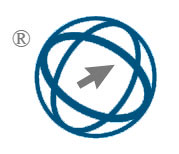U-YOLOv3: A Model Focused on Underwater Object Detection
Abstract
Underwater image enhancement and object detection has great potential for studying underwater environments. It has been utilized in various domains, including image-based underwater monitoring and Autonomous Underwater Vehicle (AUV)-driven applications such as underwater terrain surveying. It has been observed that, underwater images are not clear due to several factors such as: low light, the presence of small particles, different levels of refraction of light etc. Extracting high-quality features from these images to detect objects is a significant challenging task. To mitigate this challenge, MIRNet and modified version of YOLOv3 namely Underwater-YOLOv3 (U-YOLOv3) is proposed. The MIRNetisadeeplearning-based technology for enhancing underwater images. while using YOLOv3 for underwater object detection it lacks in detection of very small objects and huge size objects. To address this problem proper anchor box size, quality feature aggregation technique, and during object classification image resizing is required. The proposed U-YOLOv3 has three unique features which helps to work with above specified issue like accurate anchor box determination using the K-means++ clustering algorithm, introduced Spatial Pyramid Pooling (SPP) layer during feature extraction which helps in feature aggregation and added downsampling and upsampling to improve detection rate of very large and very small size objects. The size of the anchor box is crucial in detecting objects of different sizes, SPP helps in aggregation of features, while down and upsampling changes sizes of objects during object detection. The experiment on the Brackish and Trash-ICRA19 datasets shows that our proposed method enhances the mean average precision for both datasets by 10% and 9%, respectively, compared to the original YOLOv3 and other existing work. This enhancement demonstrates that our proposed model is more appropriate for identifying submerged items and is also capable of recognizing closely clustered, small, very large objects on the ocean floor.
Full Text:
PDFDOI: https://doi.org/10.31449/inf.v49i6.6642

This work is licensed under a Creative Commons Attribution 3.0 License.









